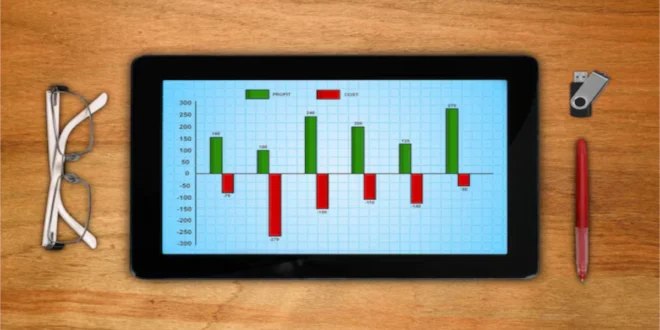Understanding Price Volume and Mix Analysis: Boost Your Revenue
In a world where financial performance and operational efficiency are increasingly critical, understanding the factors that drive revenue is essential for business leaders. Price, volume, and mix analysis (PVM) is a key approach that businesses use to dissect their revenue streams, pinpoint influences on profitability, and identify opportunities for growth. This analytical tool offers insights into how fluctuations in prices, changes in sales volume, and shifts in product or service mix affect a company’s bottom line. In this guide, we will explore the fundamentals of PVM analysis, its importance, how to conduct it, and ways to leverage its findings for strategic decision-making.
What is Price, Volume, and Mix Analysis?
Price, volume, and mix analysis is a financial tool used to understand changes in revenue. It breaks down revenue variations into three categories:
- Price: Impact of changes in the price of products or services.
- Volume: Effect of variations in the quantity of goods or services sold.
- Mix: Influence of shifts in the mix of products or services sold, such as high-margin versus low-margin items.
By isolating these factors, businesses can get a clear picture of what drives revenue changes. This granular view helps identify which factors contribute positively or negatively to financial performance, allowing for targeted actions to optimize profitability.
The Importance of PVM Analysis in Business
Price, volume, and mix analysis (PVM) serves as a cornerstone for effective business strategy and financial health. In today’s competitive landscape, understanding the nuances of revenue generation is not just beneficial; it’s essential. Below are several key reasons why PVM analysis is crucial for any business aiming for sustained growth and profitability.
1. Improved Decision-Making
At the heart of any successful business strategy is informed decision-making. PVM analysis provides business leaders with actionable insights by breaking down revenue fluctuations into distinct components—price, volume, and mix. This clarity enables leaders to identify which specific factors are driving changes in revenue. For instance, if a decline in sales is traced back to a pricing strategy that has become misaligned with market expectations, leadership can swiftly recalibrate their approach. By utilizing data-driven insights from PVM analysis, decision-makers can make strategic adjustments that are not only timely but also based on empirical evidence, reducing the risk associated with guesswork.
2. Enhanced Profitability
In an era where margins can be thin, maximizing profitability is paramount. PVM analysis enables businesses to uncover profit leaks and identify high-profit potential areas that may have been overlooked. For instance, a thorough examination might reveal that certain products, while popular, carry lower margins than others. By refining pricing strategies, adjusting sales tactics, or even phasing out underperforming products, companies can direct resources toward more lucrative offerings. This not only enhances profitability but also ensures that the business remains competitive in the market by focusing on the most rewarding opportunities.
3. Strategic Insights
Understanding customer behavior is critical for any business looking to thrive. PVM analysis provides deep insights into consumer preferences and purchasing trends, shedding light on what drives customer choices. For example, if data indicates a growing preference for eco-friendly products, businesses can adjust their mix to highlight sustainable offerings, potentially capturing a larger share of the market. By recognizing and adapting to shifts in customer behavior, companies can stay ahead of competitors, ensuring they meet market demands and enhance customer satisfaction.
4. Cost Control
Effective cost management is essential for maintaining a healthy bottom line. PVM analysis allows businesses to pinpoint which products or services are underperforming and failing to contribute to overall profitability. By analyzing the revenue contributions of various offerings, companies can identify items that do not yield sufficient returns on investment. This knowledge empowers organizations to make informed decisions about reducing production costs, streamlining operations, or discontinuing low-performing products altogether. By focusing on high-margin items and eliminating inefficiencies, businesses can bolster their financial stability.
5. Competitive Advantage
In a crowded marketplace, businesses must leverage every advantage they can. PVM analysis provides a competitive edge by facilitating the optimization of pricing structures, improving product placement, and refining marketing strategies. With a clear understanding of how different elements influence revenue, businesses can differentiate themselves from competitors. This proactive approach enables companies to respond swiftly to market changes, ensuring they not only retain existing customers but also attract new ones.
6. Forecasting and Planning
PVM analysis also plays a pivotal role in business forecasting and strategic planning. By analyzing historical data, companies can identify patterns and predict future revenue trends with greater accuracy. This foresight allows businesses to set realistic sales targets, allocate resources efficiently, and make informed investments in growth initiatives. In an environment where agility and responsiveness are critical, having reliable data to guide planning decisions can be the difference between success and stagnation.
Breaking Down the Components of PVM Analysis
Understanding each component of PVM analysis helps to uncover how each factor individually impacts revenue.
1. Price Analysis
Price analysis isolates the impact of price changes on total revenue. In this stage, businesses look at whether any revenue changes are due to shifts in pricing. For instance:
- Price Increase Impact: A price increase may boost revenue if demand is price-inelastic, meaning customers Mix Analysis continue to purchase despite higher costs.
- Discount Effects: Conversely, price reductions or discounts might lower revenue unless compensated by a volume increase.
2. Volume Analysis
Volume analysis focuses on changes in the quantity of goods or services sold. Factors such as market demand, seasonality, and competition influence sales volume. In this context:
- Positive Volume Impact: An increase in the number of units sold typically boosts revenue, assuming prices Mix Analysis and product mix remain constant.
- Volume Decline: Declining volume, on the other hand, could indicate issues with demand, distribution, or competitive positioning.
3. Mix Analysis
Mix analysis examines the influence of changes in the product or service mix on revenue. This is particularly important in companies with a range of offerings where some items have higher profit margins than others.
- High-Margin Products: Selling more high-margin products can increase profitability even if total sales Mix Analysis volume is constant.
- Product Shift Impact: A shift toward lower-margin products can negatively affect profitability, as lower-priced or low-margin items dominate the revenue mix.
Steps to Conduct a PVM Analysis
Conducting a PVM analysis involves several steps to ensure accuracy and reliability in the findings. Here’s a step-by-step guide:
Step 1: Define the Analysis Period and Gather Data
First, decide on the time frame for analysis—monthly, quarterly, or yearly—and collect the relevant data, including:
- Sales records
- Product prices
- Volume of goods sold
- Revenue by product or service category
Step 2: Establish Baseline Revenue
Calculate the baseline revenue, which is the revenue for the previous period (or a stable comparison period). This serves as the reference point for analyzing changes.
Step 3: Isolate Price, Volume, and Mix Effects
For each component—price, volume, and mix—calculate the individual impact on revenue by isolating the variable while holding others constant.
- Price Impact: Calculate how revenue would change if prices alone shifted, while keeping volume and mix Mix Analysis constant.
- Volume Impact: Estimate the effect of volume changes on revenue while holding price and mix constant.
- Mix Impact: Determine the revenue change due to the mix by keeping price and volume constant.
Step 4: Summarize and Analyze Results
Summing up these components allows you to identify the primary drivers of revenue fluctuations. Understanding which factor is the most influential can guide strategic adjustments.
Key Metrics in PVM Analysis
Certain metrics are valuable in a PVM analysis to assess the profitability and operational efficiency of the revenue drivers:
- Revenue Growth Rate: Measures the rate at which a company’s revenue increases over a specific period.
- Gross Margin: A critical indicator of profitability that reveals how much revenue exceeds the cost of goods sold.
- Contribution Margin: The profitability of each unit sold, helping to assess the impact of each product in the mix.
Practical Applications of Price, Volume, and Mix Analysis
Once a company conducts PVM analysis, it can apply the insights in numerous ways, including:
1. Pricing Strategy Development
Understanding the sensitivity of revenue to price changes enables businesses to make informed pricing decisions. For instance:
- Optimal Pricing: Identifying the price point that maximizes revenue without compromising volume.
- Discount Management: Determining when discounts are beneficial and when they harm profitability.
2. Product Line Optimization
PVM analysis helps evaluate the contribution of each product or service in the revenue mix, guiding product Mix Analysis portfolio decisions:
- Focusing on High-Margin Items: Emphasizing high-margin products can boost profitability.
- Product Discontinuation: Reducing low-margin or low-volume products that dilute profitability.
3. Volume Increase Strategies
Volume analysis reveals which products are in demand and where sales need a boost. Strategies include:
- Market Expansion: Identifying new markets for high-volume products.
- Promotional Efforts: Concentrating marketing resources on volume growth for profitable products.
4. Customer Segmentation
Mix analysis enables companies to understand the purchasing patterns of different customer segments. This Mix Analysis insight helps tailor marketing strategies to cater to high-value segments, enhancing revenue from profitable customer groups.
Challenges in Conducting PVM Analysis
While PVM analysis offers valuable insights, certain challenges may arise:
- Data Accuracy: Incomplete or inaccurate data can lead to misleading conclusions.
- External Factors: Market conditions, competitive pressures, and seasonal trends can obscure the results of a PVM analysis.
- Complexity with Diverse Product Lines: Businesses with many products may find it difficult to isolate mix Mix Analysis effects accurately.
Advanced Techniques in PVM Analysis
For more complex businesses, advanced analytical techniques can enhance PVM analysis:
Regression Analysis
Regression models can assess the relationship between revenue and variables like price and volume. This Mix Analysis approach enables a deeper understanding of how changes in one variable affect overall revenue.
Scenario Analysis
By creating multiple scenarios (e.g., best case, worst case, and expected), businesses can anticipate the impact of Mix Analysis different strategies on revenue, enhancing decision-making under uncertainty.
Data Visualization
Visual tools like dashboards and heat maps simplify the interpretation of PVM results. Graphical representations allow stakeholders to grasp complex data at a glance, facilitating quicker and more informed decisions.
Conclusion
Price, volume, and mix analysis is a powerful tool for companies seeking to understand revenue fluctuations and drive profitability. By dissecting the contributions of price adjustments, sales volume, and product mix, businesses can uncover hidden revenue drivers, fine-tune strategies, and enhance financial performance. When performed with accuracy and strategic insight, PVM analysis not only helps in short-term profitability but also sets the foundation for sustainable growth.
With a firm grasp of PVM, business leaders can confidently navigate pricing decisions, product mix adjustments, and volume growth initiatives. This analysis transforms raw data into actionable insights, empowering businesses to optimize their operations and gain a competitive edge.
Frequently Asked Questions (FAQs)
What is the purpose of Price, Volume, and Mix Analysis?
Price, Volume, and Mix (PVM) analysis helps businesses understand the specific factors driving changes in revenue. By breaking down revenue fluctuations into price, volume, and mix components, companies gain valuable insights into the impact of pricing strategies, sales volume changes, and product mix shifts. This analysis allows for more informed decision-making, which can improve profitability and drive sustainable growth.
How does Price impact revenue in PVM analysis?
In PVM analysis, the price component reflects how changes in product or service pricing affect total revenue. A price increase can enhance revenue if customer demand remains stable, while a price reduction could either increase revenue through higher sales volume or decrease it if not offset by additional sales. Understanding this impact enables businesses to make strategic pricing decisions to optimize revenue.
Why is Volume Analysis important in understanding revenue shifts?
Volume analysis helps isolate the effect of changes in the quantity of goods or services sold on revenue. It reveals whether increases or decreases in sales volume are responsible for shifts in revenue. By analyzing volume trends, businesses can better address market demands, improve operational efficiency, and focus on strategies that drive higher sales.
What role does Mix Analysis play in financial performance?
Mix Analysis examines how the blend of products or services sold affects revenue and profitability. For example, a shift toward high-margin products can boost profitability, even if the overall volume remains the same. By analyzing the mix, businesses can make informed choices about product focus and portfolio adjustments, maximizing revenue potential and improving profit margins.
Can PVM analysis help in optimizing a company’s product line?
Yes, PVM analysis is highly effective in optimizing a company’s product line. By identifying high-margin and high-demand products, businesses can focus on offerings that drive profitability and growth. Additionally, PVM analysis highlights underperforming products, helping to make decisions about discontinuing or repositioning them, ultimately refining the product portfolio for better financial performance.
What are the challenges of conducting Price, Volume, and Mix Analysis?
Challenges in PVM analysis include data accuracy, the complexity of isolating individual components, and the impact of external factors such as competition and market changes. Additionally, businesses with extensive product lines may face difficulties in accurately assessing the mix effect. Addressing these challenges requires high-quality data, robust analysis methods, and a clear understanding of market dynamics to generate reliable insights.
READ ALSO: Book Week Activities 2024: Celebrating the Joy of Reading and Imagination
 Touch Blog
Touch Blog



